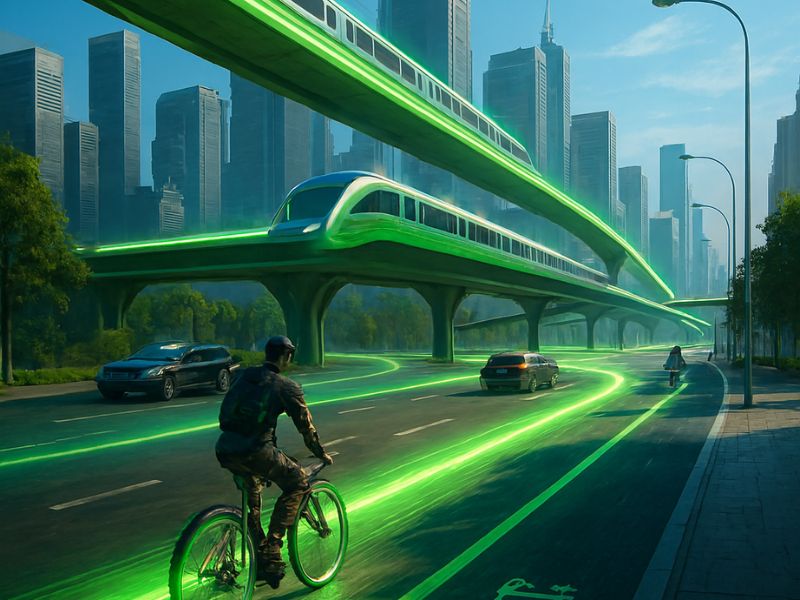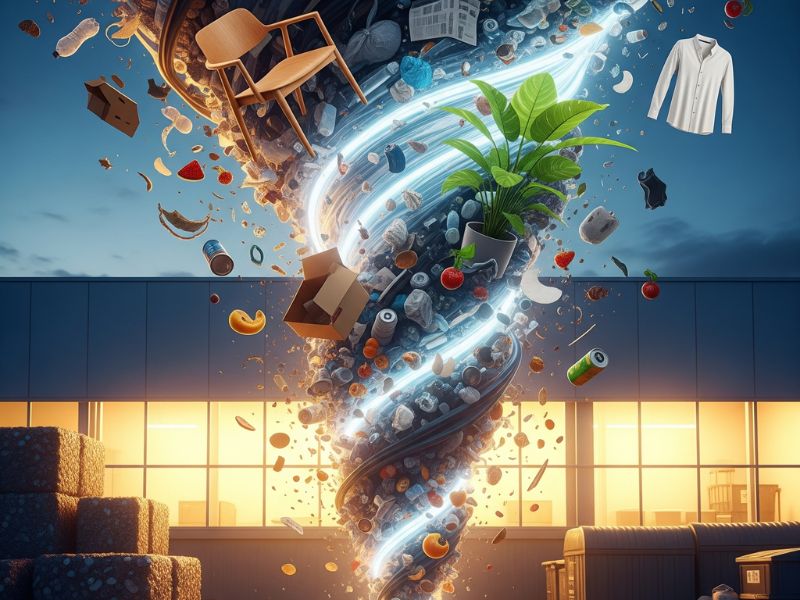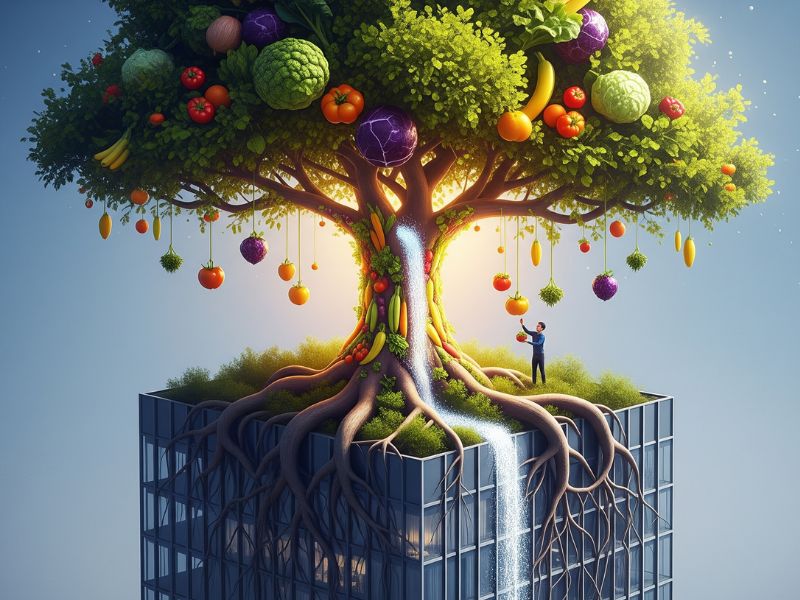Have you ever looked out your apartment window and felt a pang of longing for a bit more green? Maybe it’s the view of a gray concrete jungle, or the constant hum of city life that makes you miss the quiet rustle of leaves. It’s easy to think that living sustainably is a luxury reserved for those with sprawling backyards and compost piles, far away from the hustle and bustle of city life.
But what if I told you that the green revolution is happening right in the heart of our urban landscapes? It’s not just a trend; it’s a movement transforming cities into hubs of innovation, community, and, most importantly, sustainability. This isn’t about leaving your city behind; it’s about making your city a greener, healthier place to live, one small step at a time. Welcome to the urban green revolution.
This article is your behind-the-scenes look at how cities are becoming more sustainable and how you can be a part of this incredible shift. We’ll explore the big-picture changes and the small, actionable steps you can take today. Think of this as a conversation with a friend who’s discovered some seriously cool secrets about making city life feel a little more like a sustainable paradise.
1. From Concrete Jungles to Vertical Gardens: The Rise of Urban Agriculture

One of the most visually striking aspects of the urban green revolution is the reclaiming of space for growing food. Cities are no longer just places to consume; they are becoming places to produce.
- Rooftop Farms and Community Gardens: Imagine a rooftop that’s not just a place for a water tank, but a thriving farm supplying fresh produce to local restaurants and residents. In places like Chicago and Brooklyn, what were once forgotten rooftops are now bustling community gardens and commercial farms. These spaces not only provide fresh, local food but also create a sense of community. I remember visiting a rooftop farm in New York City—it felt like a secret oasis, a slice of a different world high above the traffic. It was a reminder that even in the densest cities, we can make room for nature.
- Vertical Farming: If you don’t have rooftop access, don’t worry. The future is vertical! Warehouses and old buildings are being repurposed into massive vertical farms. These indoor farms use hydroponics or aeroponics to grow crops with significantly less water than traditional agriculture, all without the use of pesticides. It’s a game-changer for food security and a fantastic example of the urban green revolution in action.
Your Actionable Takeaway: See if your building has an unused rooftop that could be turned into a community garden. Or, better yet, start a small herb garden on your windowsill. It’s a tiny step that connects you to the food you eat and makes your apartment feel a little more alive.
2. Reinventing Transportation: The Wheels of Change

The daily commute is often seen as a necessary evil of city life, but the urban green revolution is making it cleaner, healthier, and more enjoyable.
- Bike-Sharing and Walkability: Cities are investing heavily in bike lanes and pedestrian-friendly zones. It’s not just about reducing carbon emissions; it’s about improving quality of life. Cities like Copenhagen have made cycling so convenient that it’s the primary mode of transport for many residents. Walking or biking to work is a simple lifestyle shift that feels good, saves money, and reduces your carbon footprint.
- Accessible Public Transit: A robust, reliable public transportation system is the backbone of a sustainable city. It reduces the need for individual cars, which are a major source of urban pollution. The goal is to make public transit so efficient and appealing that taking the train or bus is a no-brainer. This focus on connectivity and accessibility is a key driver of the urban green revolution.
Your Actionable Takeaway: Try swapping one car trip a week for a bike ride or a walk. Explore a part of your city on foot that you’ve only ever seen from your car window. You might discover a new favorite coffee shop or a hidden park!
3. Smart Waste Management: Closing the Loop

Waste is a massive issue in cities, but the urban green revolution is tackling it head-on with innovative solutions that turn waste into a resource.
- Composting and Food Waste Programs: Many cities are now offering curbside composting, making it easy to divert food scraps from landfills. These scraps are then turned into nutrient-rich soil for urban farms and parks. If your city doesn’t have a program, you can still participate. My friend started a small worm bin in her apartment—it sounds a little weird, but it was surprisingly easy and produced amazing fertilizer for her houseplants. This is a perfect example of a small, personal contribution to the urban green revolution.
- The Circular Economy: The idea is to move away from the “take-make-dispose” model and towards a circular one where waste is eliminated. This means repairing items instead of replacing them, buying from companies that use recycled materials, and supporting local second-hand shops. It’s a shift in mindset—viewing every item not just as a possession, but as part of a larger, interconnected system.
Your Actionable Takeaway: Find a local compost drop-off point or farmer’s market that accepts food scraps. Before you throw something away, ask yourself: “Can I repair this? Can I repurpose it? Can I give it to someone who will use it?” This single question can change your habits for the better. You might want to take a look at hot news.
4. The Power of Green Infrastructure: Reconnecting with Nature

One of the most beautiful and long-lasting aspects of the urban green revolution is the integration of nature into city design.
- Urban Parks and Green Spaces: Parks are the lungs of the city. They help clean the air, reduce the “heat island” effect, and provide crucial spaces for recreation and relaxation. They’re also a testament to the power of community advocacy. Many parks exist today because passionate residents fought for them.
- Green Roofs and Rainwater Harvesting: Buildings themselves are becoming more sustainable. Green roofs, for instance, are not just pretty—they absorb stormwater, provide insulation, and create new habitats for local wildlife. This kind of innovative thinking is at the heart of the urban green revolution. It’s about seeing every surface as a potential opportunity to add a touch of green.
Your Actionable Takeaway: Spend more time in your local parks. Notice the plants, the birds, the way the air feels cleaner. Appreciating these spaces is the first step to wanting to protect them. You can also volunteer for a local park cleanup or tree-planting event.
5. Community and Collaboration: The Heart of the Revolution

The biggest secret of the urban green revolution is that it’s not driven by some faceless government agency. It’s driven by people—neighbors, friends, and everyday heroes working together.
- Supporting Local and Sustainable Businesses: Every time you choose to buy from a local farmer’s market, a zero-waste shop, or a business that uses recycled materials, you are casting a vote for a more sustainable future. You’re telling the market what you value.
- Joining the Conversation: Get involved. Join a local environmental group, attend a city council meeting, or simply talk to your friends about what you’re learning. The more we talk about these issues, the more we can influence policy and inspire others. Sharing your own small contributions is a great way to spread the word about the urban green revolution.
Your Actionable Takeaway: Seek out one local, sustainable business to support this week. It could be a coffee shop that offers a discount for bringing your own mug, or a store that sells ethically sourced goods.
FAQs: Your Questions on the Urban Green Revolution
Q1: Isn’t living sustainably in a city just for the wealthy? A1: Not at all. Many sustainable practices—like biking instead of driving, reducing food waste, and buying second-hand—are often more affordable in the long run. The urban green revolution is about making smart, mindful choices that benefit both the planet and your wallet. It’s about a shift in values, not a change in income bracket.
Q2: What’s the biggest impact I can have as one person? A2: The biggest impact you can have is through your daily habits and your voice. Your choices add up, and your example can inspire others. The simple act of consistently recycling, composting, or using public transit creates a ripple effect. Don’t underestimate the power of your example in driving the urban green revolution.
Q3: How can I find out what my city is doing to be more sustainable? A3: Most cities have an “Office of Sustainability” or a similar department on their official website. You can find information on local initiatives, from renewable energy projects to waste management programs. You can also follow local environmental groups on social media to stay in the loop and find opportunities to get involved.
The Final Word
The urban green revolution is a beautiful, ongoing story. It’s a story of innovation, community, and hope. It’s a reminder that even in our crowded, busy cities, we can carve out spaces for nature to thrive and for people to connect. It might feel like a big challenge, but remember, every skyscraper was built one brick at a time. The sustainable cities of the future will be built on the small, thoughtful choices we make today.
So, the next time you look out your window, don’t just see a gray landscape. See a canvas of opportunity. See the rooftop garden, the bike path, the community compost bin. See the potential for a greener, healthier, and more beautiful city. The revolution has already begun—all you have to do is join in.



